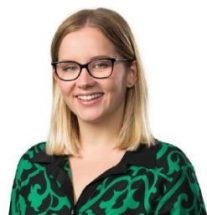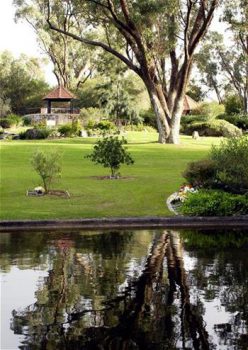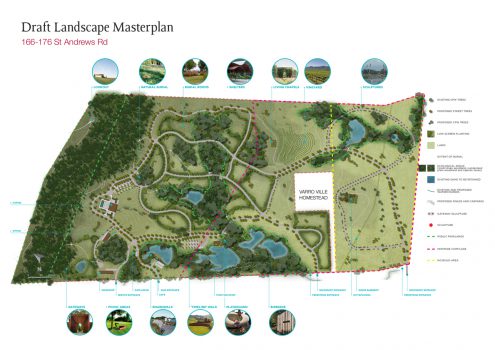It’s not quite a zombie apocalypse but authorities have to think seriously about how they’re planning for the dead, a conference has heard.
Australia’s main metropolitan regions are facing a shortage of burial space, and Sydney is projected to run out of places to bury its dead by 2051, according to a series of reports done since 2008 when the looming shortage was first identified in a NSW Department of Lands Paper.

Town planner Kate Ryan, from consultants Urbis, outlined some solutions at the PIA National Planning Institute of Australia conference in the Gold Coast on Friday.
Speaking to Government News ahead of her presentation, Ms Jenkins said these included rezoning land, creating burial grounds that double up for other purposes and opening sites to “renewable tenure”.
Up till now Sydney has been able to rely on cemeteries that were built in the 1800s, she says, but that infrastrucure is fast reaching capacity
“We’ve never had to consider this issue until now so it’s certainly a new thing for the planning industry to be looking at. It requires a big shift in the way we think.
“We need to be looking at a land supply solution as well as thinking about how we bury more sustainably, and initiate a conversation with the public so people are aware of options.”
Cemetries as public spaces
Ms Ryan says we need to move on from the idea of cemeteries as gothic spaces inhabited only by “big crumbling headstones”.

The modern cemetery is more likely to resemble a landscaped memorial park, with walking trails, playgrounds and open public spaces.
“This landscape has evolved over time and can evolve more,” she says. “It’s about changing peoples’ perceptions of a cemetery.”
Pinnarroo Valley Memorial Park in WA is one example of this, Ms Ryan says.
Run by the Metropolitian Cemeteries Board, Pinnarroo has been developed and maintained as a natural bushland cemetery. Its grounds are visited by native animals including kangaroos and are used for walking, jogging and picnics.
In NSW, the Catholic Metropolitan Cemeteries Trust is preparing a development for Macarthur Memorial Park, in Sydney’s south West, to become a cemetery and parklands which will meet the needs of the community for the next 100 years.
The proposal includes 35 hectares of publicly accessible parklands with walkways, picnic areas and a sculpture park, as well as burial areas for approximately 136,000 burial plots.
Renewable tenure
Recent amendments to the NSW Cemetery and Crematoria Act make it possible to rent burial spaces for a certain period, after which time remains can be exhumed to make way for another body.
“After tenures expires its expected there won’t be too much left (and) what remains is exhumed and put in a smaller box and buried deeper,” Ms Ryan says.
Kemps Creek, west of Sydney, and Waverly Cemetery in the city’s east, currently offer this option.However critics, including NSW opposition lands spokesman Mick Veitch, who has introduced a Bill into the lower house to throw out renewable tenure laws, says it will create two two classes of burial.
“The Berejiklian Government’s proposals will create two classes of burials – a temporary resting place for those who can’t afford it, and a place of eternal rest for those who can,” he told Government News.
“The Government have failed to establish any new cemeteries and have resorted to these unsavoury proposals which have insufficient safeguards to protect the disturbance of loved one’s remains.”

Natural burial
Natural burial, which is characterised by minimal alterations to the natural landscape and strives leave no ecological footprint, is another option, Ms Ryan says.
Sydney Natural Burial Park at Kemp’s creek maintains a natural habitat without headstones or monuments, using GPS technology to record locations. The body is prepared without chemical preservatives and uses biodegradable coffins. It also operates under 30-year renewable tenure.
Another benefit of natural burial, Ms Ryan says, is that it can preserve environmentally sensitive land from development.
“It’s a great way of maintaining and preserving important ecological land, or pockets of significant vegetation, because it’s harder to get a residential subdivision if it’s a cemetery,” she says.
Comment below to have your say on this story.
If you have a news story or tip-off, get in touch at editorial@governmentnews.com.au.
Sign up to the Government News newsletter.





Viking funerals. Send down river, on fire and out to sea.
I looked into sea burials, it’s amazing how much nonsense regulation there is. They consider a body as junk or rubbish. Even though the sea life would sort your body out in no time. End of the day, once the heart is ceased to pump and the blood eventually stops, you soul leaves and all that is left is an organic body that the Laws of Natural will get hold of.
Probably can’t change the older generation, but younger minds need to get past the attachment of cemeteries. A loved one lives on in your mind. The body is no longer relevant. The soul goes to where ever souls go.
Kate is a great advocate for cemetery planning and for the work that we do.
Our design for a Sculpture Garden at Pinnarro (WA) and the Masterplan for Macarthur Memorial Park typifies our philosophy for landscape cemeteries, a philosophy which has underpinned our work for decades.
Sustainability is key: we must minimise our footprint and avoid locking ever increasing amount of land for interment of an exponentially growing population.
Designing cemeteries as parks which will continue to have a social function when full is a start…
We are glad that our message is being spread by others. It is an important part of a discussion around the “cemetery industry “which needs to occur.